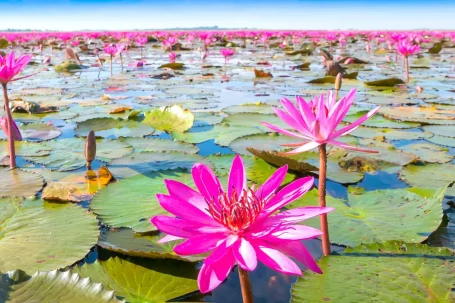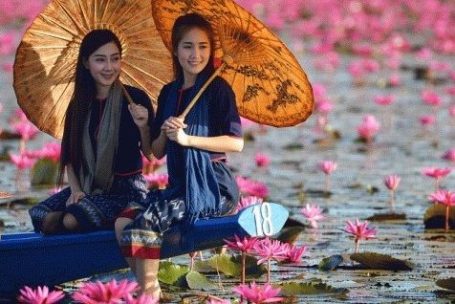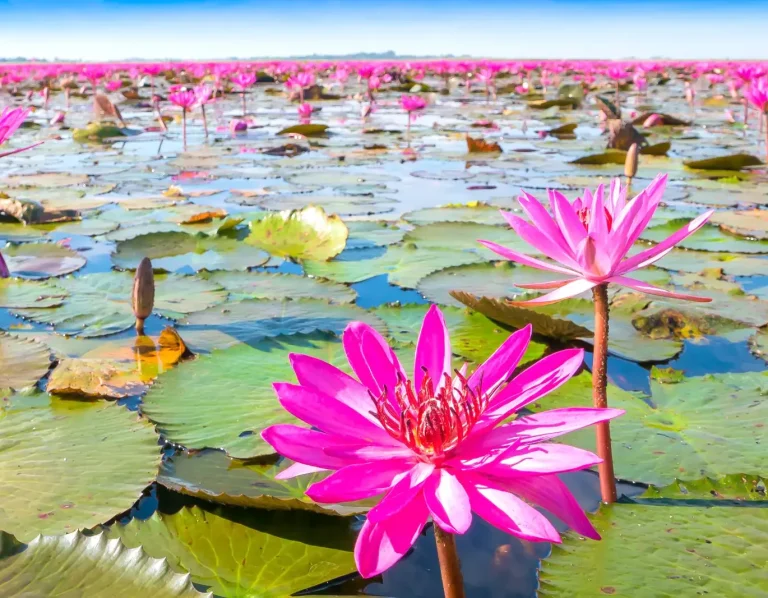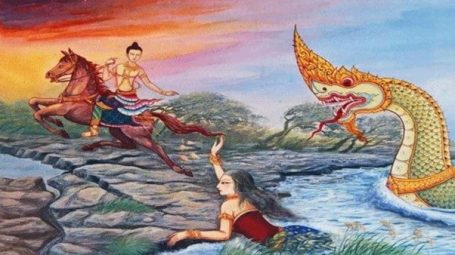The Red Lotus Lake ทะเลบัวแดง
The Red Lotus Lake is approximately 15km from Udon Thani Farm Stay hosted by @upthefarmwithpatchandpaul.
The Red Lotus Lake ทะเลบัวแดง is a truly picturesque, remarkable natural wonder and a Stunningly Beautiful Lake with an Ancient Legend.
The Lake, whose official name is Nong Han Kumphawadpi, was once unknown to most tourists, now it is widely recognised as one of the priceless jewels of Udon Thani and the Unseen Thailand.
‘Red Lotus Lake’ is the English translation of the lake’s popular Thai name ‘Talay Bua Daeng’ทะเลบัวแดง. A more accurate and direct translation is ‘Red Lotus Sea’.




The Legend of the Lake
The Legend of the Red Lotus Lake: The Lake provides the narrative for the ancient Isan legend of Nang Ai. This gives the lake a truly mythical feel besides its natural beauty.
The legend of Nang Ai is one of two great narratives of Isan storytelling (the other is Phya Khankhaak: The Toad King). There are many versions of the Nang Ai legend of which the original is an epic poem first written on palm leaf manuscripts. Only fragments of this now survive. An English translation of the poem by Wajuppa Tossa can be read here.




Ban Chiang UNESCO Site
Ban Chiang, a UNESCO World Heritage Site since 1992, is considered the most important prehistoric settlement in South-East Asia. The site contains the earliest evidence of farming, manufacturing, and use of metals in this region. It is seen to also represent an important leap in human cultural, social and technological evolution.
The Ban Chiang Archaeological Site is a prehistoric human habitation and burial site. It is considered by scholars to be the most important prehistoric settlement so far discovered in Southeast Asia, marking the beginning and showing the development of the wet-rice culture typical of the region.
More Information van be found here: Ban Chiang Archaeological Site - UNESCO World Heritage Centre




We need your consent to load the translations
We use a third-party service to translate the website content that may collect data about your activity. Please review the details in the privacy policy and accept the service to view the translations.

